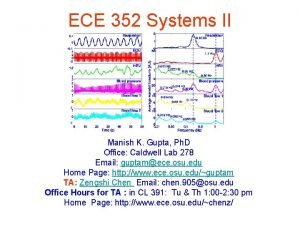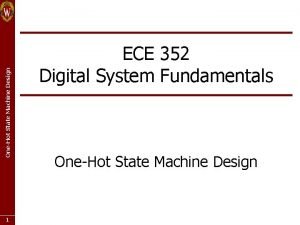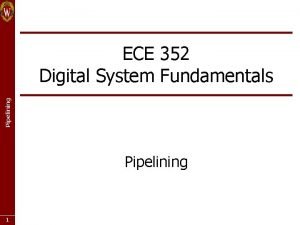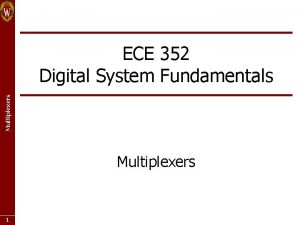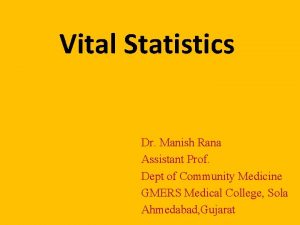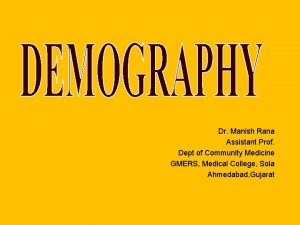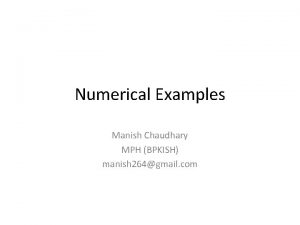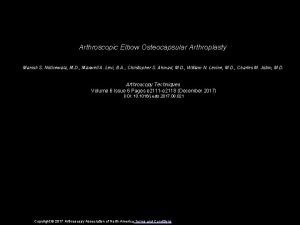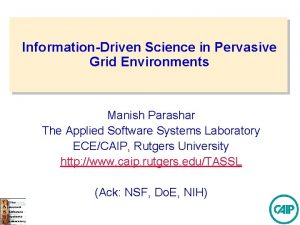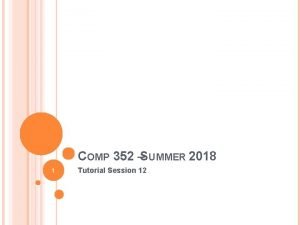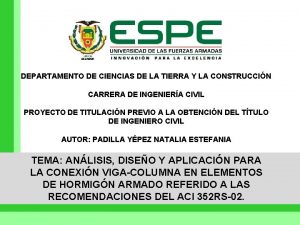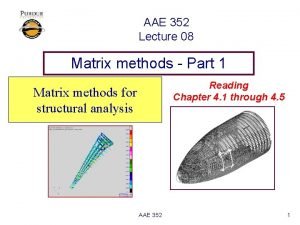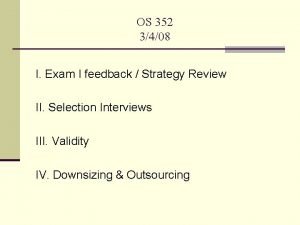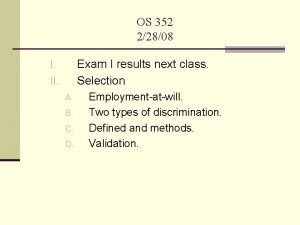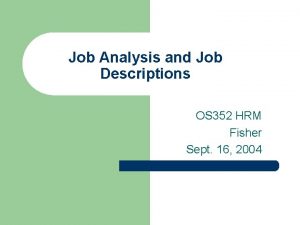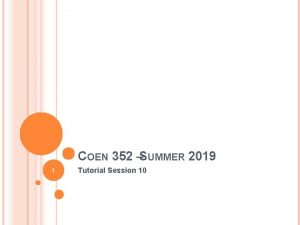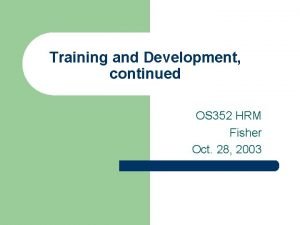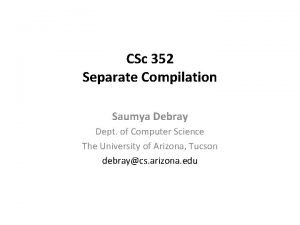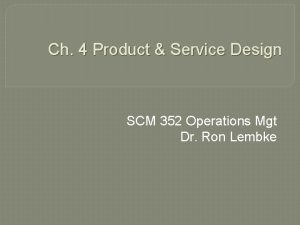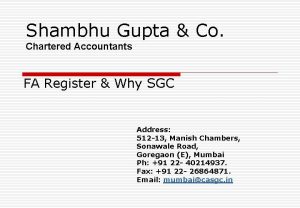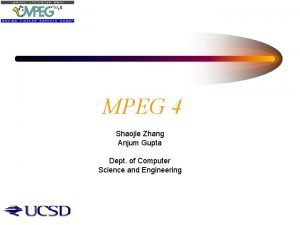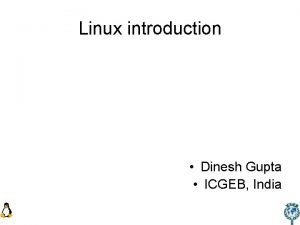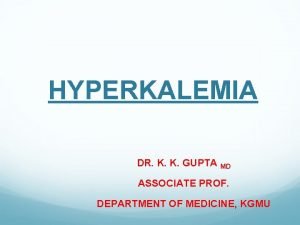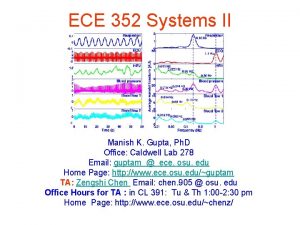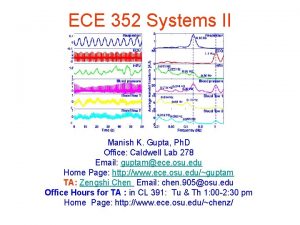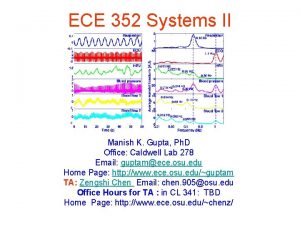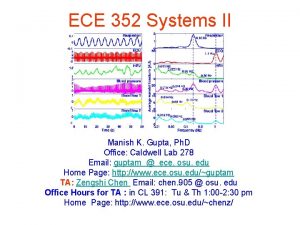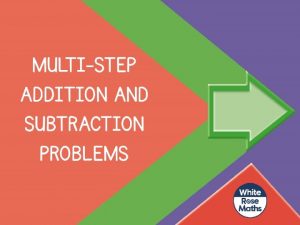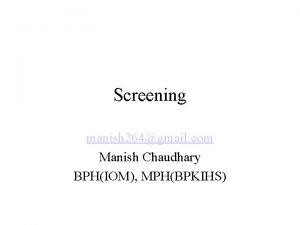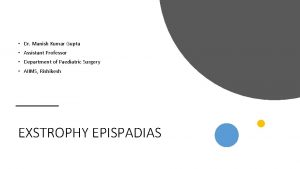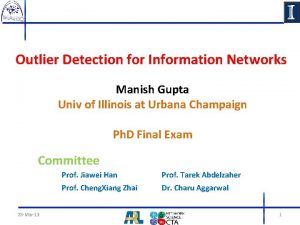ECE 352 Systems II Manish K Gupta Ph






![System Properties • Let x[k], x 1[k], and x 2[k] be inputs to a System Properties • Let x[k], x 1[k], and x 2[k] be inputs to a](https://slidetodoc.com/presentation_image/8a89ddeadc33d891d48465146615a874/image-7.jpg)




























- Slides: 35

ECE 352 Systems II Manish K. Gupta, Ph. D Office: Caldwell Lab 278 Email: guptam@ece. osu. edu Home Page: http: //www. ece. osu. edu/~guptam TA: Zengshi Chen Email: chen. 905@osu. edu Office Hours for TA : in CL 391: Tu & Th 1: 00 -2: 30 pm Home Page: http: //www. ece. osu. edu/~chenz/

Acknowledgements • Various graphics used here has been taken from public resources instead of redrawing it. Thanks to those who have created it. • Thanks to Brian L. Evans and Mr. Dogu Arifler • Thanks to Randy Moses and Bradley Clymer

Fourier Transform ECE 352

ECE 352 REVIEW SOME CONCEPTS Slides edited from: • Prof. Brian L. Evans and Mr. Dogu Arifler Dept. of Electrical and Computer Engineering The University of Texas at Austin course: EE 313 Linear Systems and Signals Fall 2003

Signals • A function, e. g. sin(t) or sin(2 p n / 10), useful in analysis • A sequence of numbers, e. g. {1, 2, 3, 2, 1} which is a sampled triangle function, useful in simulation • A collection of properties, e. g. even, causal, and stable, useful in reasoning about behavior • A piecewise representation, e. g. • A functional, e. g. d(t)

Systems • Systems operate on signals to produce new signals or new signal representations • For a single-input one-dimensional continuoustime system, we can represent it – As an operator – As a block diagram x(t) T{ • } y(t) x[k] T{ • } y[k]
![System Properties Let xk x 1k and x 2k be inputs to a System Properties • Let x[k], x 1[k], and x 2[k] be inputs to a](https://slidetodoc.com/presentation_image/8a89ddeadc33d891d48465146615a874/image-7.jpg)
System Properties • Let x[k], x 1[k], and x 2[k] be inputs to a linear system and let y[k], y 1[k], and y 2[k] be their corresponding outputs • A linear system satisfies – Additivity: x 1[k] + x 2[k] y 1[k] + y 2[k] – Homogeneity: a x[k] a y[k] for any constant a • Let x[k] be the input to time-invariant system and y[k] be its corresponding output. Then, x[k - m] y[k - m], for any integer m

Sampling • Many signals originate as continuous-time signals, e. g. conventional music or voice • By sampling a continuous-time signal at isolated, equally-spaced points in time, we obtain a sequence of numbers s(t) Ts k {…, -2, -1, 0, 1, 2, …} Ts is the sampling period. t Sampled analog waveform

Sampling • Consider audio compact discs (CDs) Fs = 44. 1 k. Hz Ts = 0. 023 ms x(t) A/D v[k] Fs = 44. 1 k. Hz Ts = 0. 023 ms Optical Disk Writer Recording Studio CD Optical Disk Reader D/A v[k] Stereo System / PC • Analog-to-digital (A/D) conversion consists of filtering, sampling, and quantization • Digital-to-analog (D/A) conversion consists of interpolation and filtering x(t)

Laplace Transform

Forward Laplace Transform • Decompose a signal f(t) into complex sinusoids of the form es t where s is complex: s = s + j 2 pf • Forward (bilateral) Laplace transform f(t): complex-valued function of a real variable t F(s): complex-valued function of a complex variable s • Bilateral means that the extent of f(t) can be infinite in both the positive t and negative t direction (a. k. a. two-sided)

Inverse (Bilateral) Transform • Inverse (Bilateral) Transform is a contour integral which represents integration over a complex region– recall that s is complex c is a real constant chosen to ensure convergence of the integral • Notation F(s) = L{f(t)} f(t) = L-1{F(s)} variable t implied for L variable s implied for L-1

Laplace Transform Properties • Linear or nonlinear? • Linear operator f(t) L F(s)

Laplace Transform Properties • Time-varying or time-invariant? This is an odd question to ask because the output is in a different domain than the input.

Example

Convergence • The condition Re{s} > -Re{a} is the region of convergence, which is the region of s for which the Laplace transform integral converges • Re{s} = -Re{a} is not allowed (see next slide)

Regions of Convergence • What happens to F(s) = 1/(s+a) at s = -a? (1/0) • -ea t u(-t) and e-a t u(t) have same transform function but different regions of convergence Im{s} f(t) 1 -1 t t Re{s} f(t) = -ea t u(-t) f(t) = e-a t u(t) causal anti-causal Re{s} = -Re{a}

Review of 0 and + 0 • d(t) not defined at t = 0 but has unit area at t = 0 • 0 - refers to an infinitesimally small time before 0 • 0+ refers to an infinitesimally small time after 0

Unilateral Laplace Transform • Forward transform: lower limit of integration is 0 - (i. e. just before 0) to avoid ambiguity that may arise if f(t) contains an impulse at origin • Unilateral Laplace transform has no ambiguity in inverse transforms because causal inverse is always taken: – No need to specify a region of convergence – Disadvantage is that it cannot be used to analyze noncausal systems or noncausal inputs

Existence of Laplace Transform • As long as e-s t decays at a faster rate than rate f(t) explodes, Laplace transform converges for some M and s 0, there exists s 0 > s to make the Laplace transform integral finite We cannot always do this, e. g. does not have a Laplace transform

Key Transform Pairs

Key Transform Pairs

Inverse Laplace Transform • Definition has integration in complex plane – We can use lookup tables instead – See Tables 8. 1 page 375 and Table 8. 2 page 376, Text Book • Many Laplace transform expressions are ratios of two polynomials, a. k. a. rational functions • Convert complicated rational functions into simpler forms – Apply partial fractions decomposition – Use lookup tables

Partial Fractions Example #1

Partial Fractions Example #2

Partial Fractions Example #3

Use Matlab to find Laplace Transform, Inverse Laplace Transform ?

Laplace Transform Properties • Linearity • Time shifting • Frequency shifting • Differentiation in time

Differentiation in Time Property

Laplace Transform Properties • Differentiation in frequency • Integration in time – Example: f(t) = d(t) • Integration in frequency

Laplace Transform Properties • Scaling in time/frequency – Under integration, f(2 t) f(t) t t -2 • Convolution in time • Convolution in frequency 2 -1 1 Area reduced by factor 2

Example • Compute y(t) = e a t u(t) * e b t u(t) , where a b • If a = b, then we would have resonance • What form would the resonant solution take?

Linear Differential Equations • Using differentiation in time property we can solve differential equations (including initial conditions) using Laplace transforms • Example: (D 2 + 5 D + 6) y(t) = (D + 1) f(t) With y(0 -) = 2, y’(0 -) =1, and f(t) = e- 4 t u(t) So f ’(t) = -4 e-4 t u(t) + e-4 t d(t), f ’(0 -) = 0 and f ’(0+) = 1

3 rd Day Class Home Work No Submission • • Read Pages 363 -375 (Chapter 8) Play with Matlab !

Any Questions ?
 Dr manish kumar gupta
Dr manish kumar gupta Manish gupta
Manish gupta One hot state machine
One hot state machine Ece 352
Ece 352 Ece 651
Ece 651 Gross reproduction rate
Gross reproduction rate Dr manish rana
Dr manish rana Manish chaudhary mathura
Manish chaudhary mathura Aman chaudhary
Aman chaudhary Manish noticewala md
Manish noticewala md Manish definition
Manish definition Manish parashar utah
Manish parashar utah It 352
It 352 352 formação
352 formação Comp 352
Comp 352 Union viga columna hormigon armado
Union viga columna hormigon armado Troop 352
Troop 352 Aae 352
Aae 352 Exam feedback examples
Exam feedback examples Os 352
Os 352 Os 352
Os 352 Coen 352
Coen 352 Opwekking 464
Opwekking 464 Tmk 352
Tmk 352 Os 352
Os 352 Saumya debray
Saumya debray Scm 352
Scm 352 Grraacceess
Grraacceess Shambhu gupta & co
Shambhu gupta & co Bela gupta
Bela gupta Dr himanshu gupta
Dr himanshu gupta Shankar gupta
Shankar gupta Anjum gupta ucsd
Anjum gupta ucsd Dinesh gupta icgeb
Dinesh gupta icgeb Gupta period costumes
Gupta period costumes Dr kk gupta
Dr kk gupta

